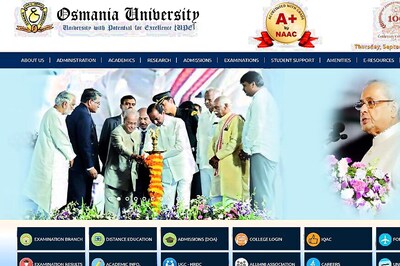
views
This month, a film and a book based on the life of retired Flight Lieutenant of the Indian Air Force (IAF), Gunjan Saxena, released back to back. Both aimed at telling the inspiring story of Saxena, who is known as the first Indian woman pilot to fly in a combat zone. While the book is an autobiography penned jointly by Saxena and author Kiran Nirvan (a pseudonym used by authors Kirandeep Singh and Nirvan Singh), the movie featuring Janhvi Kapoor in the titular role of Gunjan Saxena has been directed by Sharan Sharma and produced by Dharma Productions.
However, despite being based on the life of the same person, there are stark differences between the book and the film. The film, Gunjan Saxena: The Kargil Girl - which begins with a disclaimer that says that it is a 'fictionalized and dramatized version of the life of Gunjan Saxena' and 'no scenes should be taken as a true incident or event' - takes many creative liberties. It introduces fictional characters, omits real ones, and misrepresents few others and has already kicked up a storm of controversies.
For starters, the Indian Air Force is miffed that they have been portrayed in a negative light and have asked the Censor Board to chop off parts were such 'misrepresentation' has happened or to urge the filmmaker to replace those portions. The second complaint against the film is that Gunjan Saxena's character has been wrongly depicted as the only lady officer at the Udhampur Base, and the first woman pilot to fly in a combat zone.
In the film, we see Gunjan Saxena fight two battles: one is against the deep-rooted patriarchy in the domestic front - at home, and her workplace (in the IAF) - and the other is at Kargil where she not only carries out rescue missions but also saves the life of her misogynistic boss, Dileep Singh, thereby winning his respect.
In reality, however, there was no such boss, claims Kiran Nirvan, the author of the book The Kargil Girl, An Autobiography. "According to the information we were given during the writing of the book, one can figure out that there was no such human being," said Nirvan. The author claimed that since the filmmakers had, at the very onset, declared that it is a fictional and dramatized narrative, perhaps they wanted to introduce this fictitious character to convey certain ideas through him.
Much to the chagrin of the Indian Air Force, the ideas that the makers of the film wanted to introduce through the character of Flight Commander Dileep Singh is how reluctant and antagonistic male officers can be in accepting a woman in their team. It isn't just that one character though, the entire unit at Udhampur base is depicted as a group of sexist men, who refuse to fly sorties with Saxena's character citing reasons like, "What happens if this madam begins to cry mid-air?', and making comments like, "Training ground mein ladki ke haantho marna nahi chahta hoon."
The reason behind introducing a horde of chauvinists in the film is obviously to magnify the obstacles that Saxena had to surmount in order to achieve success because Dharma Productions doesn't do subtle and minimal, even when it comes to depicting feminism onscreen. Therefore, every small step is a huge struggle for Saxena in the film.
The lack of amenities and facilities for women at an all-men airbase is a struggle she faces alone, and the social isolation at gatherings is also something she faces alone. Tension is also introduced early on in the plot, as Gunjan's mother is depicted as a simple, conventional woman, brought up in patriarchal mould who doesn't approve of her daughter's ambition of becoming a pilot, and her elder brother is an overprotective prick, who doesn't have an ounce of faith in his sister's capabilities.
These, of course, are not true, if you go by the book. "Saxena's mother is a calm, sensible and logical woman and very supportive of her daughter's ambitions," said the author. Unlike the film, where her character played by Ayesha Raza seems to be a housewife, in real life, she was a teacher, who earned her B.Ed degree after the birth of her two kids to share the financial burden with her husband. She was practical and mindful of inculcating good values in her young kids.
She was also exceptionally supportive of Saxena's ambitions to become an Air Force pilot and made sure that the entire family diets with her Gunju, so that her daughter could lose weight according to the standards of Air Force job requirements. However, the film makes no attempt at highlighting her progressiveness, in fact, it relegates her to superstitious and regressive values.
There are very few women characters in the film apart from Saxena's mother, and they too are shown in poor light, which is unfortunate, given that Saxena was not only raised by a strong mother, but her path crossed many amazing and brave women, who too made their mark in the Air Force.
The book, however, stays truer to the narrative and allows us a few glimpses of these women. It introduces us to the lovely and vivacious SSB mate, who along with Saxena, took the admission test for the Air Force, but didn't manage to clear it. It introduces us to a coursemate, daughter of an Air Marshal who refused to take preferential treatment despite the position of her father and was a stickler for rules and of course, it introduces us to another one of Gunjan’s colleague, who along with Saxena, was posted at the Udhampur Base, even though she has not been shown in the film.
This milieu of women could have elevated the film to a far greater height, and the victories of Saxena, as shown in the film, would not have been any less if these women characters were also represented in the film, but the writers choose to endorse an exceptionally simplistic and reductive narrative, and insisted on token feminism, instead of actually taking a feminist stand. In fact, the character of Gunjan Saxena in the film is portrayed as an unsure girl who cannot stand up for herself, cries at the drop of a hat and doesn't have the basic ability to gather the necessary information for a flying course. It is a far cry from the strong, confident and sensible Gunjan Saxena in the book.
The book also claims that her brother was not just a childhood playmate but also someone who took immense pride in her smallest of achievements. There is only one instance in the book, where we see him ask Saxena why she was in Srinagar military base which wasn't safe during the Kargil war. She retorts to him immediately saying that if it wasn't safe, why was he there? That was the end of that conversation. After that, the siblings continued to meet for morning briefings and had breakfast together and no one needed to be saved by the other, as opposed to what has been shown in the film.
The book is undoubtedly the more accurate version of the events. "We discussed the storyline and narrative with her (Gunjan Saxena) thoroughly, and she gave us ideas on how to go about it. We wrote drafts, and she made amendments. Eventually, she finalized a draft...every little piece was sent to her for approval," recalls the author of the autobiography. The movie perhaps did not follow the same process, and the changes and creative liberties that were taken in writing the script are, in fact, its weak spots.
Saxena talks very little about the gender-based discrimination in the IAF Udhampur base in her autobiography. She recalls that a Flight Lieutenant, who was an adjunct of her unit, gave her a lukewarm welcome. But she also points out that she wasn't the only woman there, and shared a room with Sreevidya Rajan. The lack of amenities was obvious, and arrangements were soon made for the women officers. They didn't have to build the changing rooms themselves.
In the book, Saxena and the co-author Nirvan write, "Compared to the male cadets from the academy, they (the officers at Udhampur base) were almost reluctant to converse with us and were mostly cold in their behavior, much like my unit’s adjutant... it was as if our presence was making them uncomfortable, and everyone was eerily quiet... Later that day, an officer told us that the reason the other officers were refraining from talking to us was because we were the first women pilot officers to be posted to that station, and prior to our reaching the station, all male officers were briefed to behave themselves while we were around and not get too friendly with us. Such behaviour was obvious and adjusting would require some time... After about two months, I got my own blue LML Vespa. By then, the other officers had become familiar with our presence and that awkward feeling that we had sensed initially had abated."
Flt. Lt. Sreevidya Rajan, who was also posted along with Saxena at the Udhampur base, echoed the same sentiments in a recent interview to The Outlook where she said that unlike what has been depicted in the film, no one hated women in the forces. She said, "Like it is there in every area of work, few people are doubtful and they are not very happy with the idea of women stepping into forces and sharing the space. There were initial doubts and apprehensions as to whether the women will be able to perform the task assigned to them... It was a hard posting too because Udhampur is an operational unit in Jammu and Kashmir. And the conditions are tough there. But after we started flying and proved our worth, the entire outlook of the male officers changed."
The underlying subtle sexism that both Saxena and Rajan alludes to in the book and interview respectively needed a nuanced treatment when the story was being translated for the screen. But in the hand of Sharan Sharma, who had previously worked on films like Yeh Jawaani Hai Deewani, and Ae Dil Hai Mushkil, they are delivered ham-handedly without an ounce of nuance.
The book however differs with Rajan on one point. While the book claims that Saxena was the first woman to fly in a combat zone, Rajan has made the same claim herself. "Until a new claimant came up, it was an established universal fact that Gunjan ma'am is the first woman pilot to fly in a combat zone, as is mentioned in our book," said Kiran Nirvan. He further added, "The aim of the book and the movie was to glorify her achievements, and not to depict anyone in a bad light. And, I believe that the book rightly does so."


















Comments
0 comment